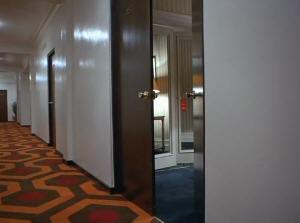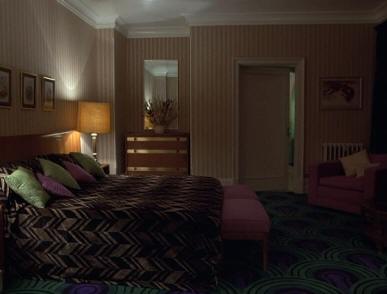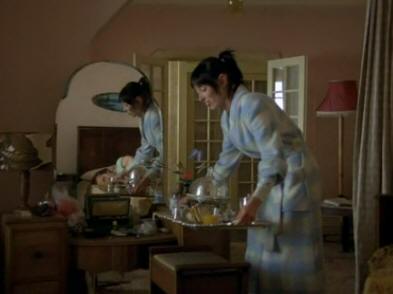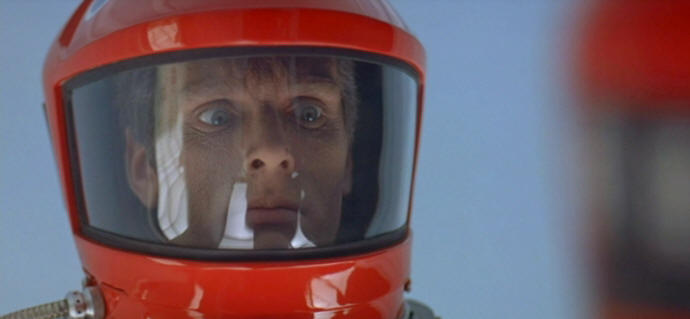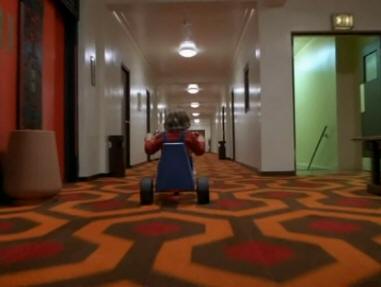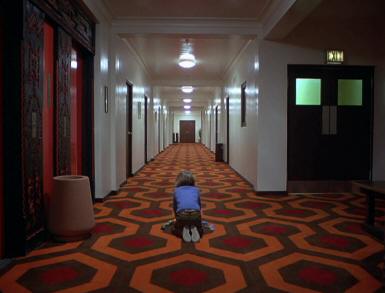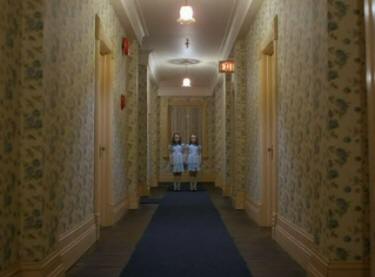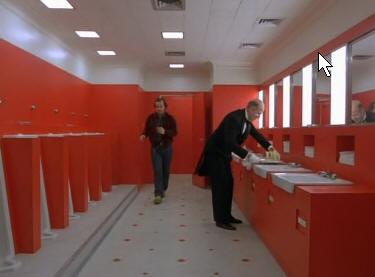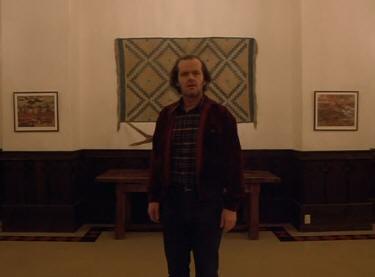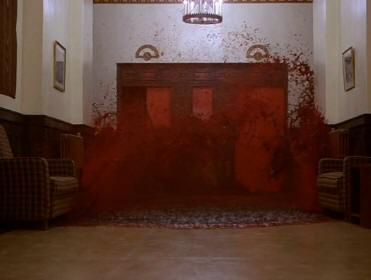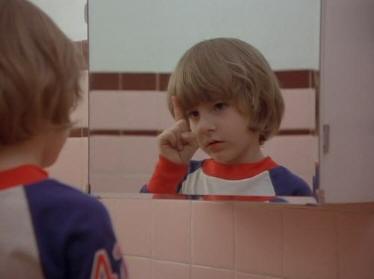CHAPTER FIVE The deceptive maze themes of The Shining are reinforced through the use off mirrors. This is most prominent in scenes that take place in:
As mentioned in the previous chapter, a small door shaped mirror prop was also featured outside the freezer room, possibly informing us that the shifting room was deliberately mirrored in the set design. This cross symbolism between mirrors and doors also occurs:
The Shining isn’t the first Kubrick film to feature a symbolic connection between doors and mirrors. In 2001, the monolith was frequently symbolized as a doorway between dimensions. Having travelled through the stargate, the astronaut Dave Bowman found himself looking into a bathroom mirror and when the shot was cut to a close up, the pipe and reflections of his helmet revealed that the camera had flipped over to the other side of the mirror. He was existing in two parallel dimensions at once (read the 2001: A Space Odyssey analysis for more).
In The Shining, mirrors are also conceptually hinted at by other kinds of reflective or "shiny" surfaces. The film’s opening shot instantly introduces the mirror theme by showing us mountain ranges reflected in surrounding lakes.
Polished floors and walls are also frequent, especially in the Colorado Lounge and room 237 hallways. When they’re more dimly lit this hall of mirrors effect is even more prominent.
But the most unconsciously powerful form of mirroring in the film is Kubrick’s use of visual symmetry. Some of the sets are designed so that when the camera is placed in a particular position the screen on which we are viewing the film is conceptually mirrored down the centre. Some examples of this include:
The most obvious use of mirror symbology occurs when shots zoom in or out of actual mirror props. This occurs when Danny speaks to his imaginary friend Tony in a bathroom mirror and when Wendy sees the word “murder” written backwards on the bathroom door.
The scene in which Jack is brought breakfast is one of the most interesting in this respect. We begin with a close up of Jack’s face, which zooms out to reveal that we are looking at his reflection in a mirror before zooming back in until the mirror surface fills up the whole screen again. Then we see a jarring visual cut. Jack’s image flips so that we are seeing him in his natural orientation, instead of viewing his reflection. The assorted mirror concepts in The Shining aren’t just about disorientating us. They are essential to unravelling the hidden narratives of the film, through the concept of duality. This duality takes many forms – character duality, location duality, scene repetition, and of course, parallels between the film’s content and the audience’s reality – a standard Kubrick device. On that basis, conceptual mirroring will resurface repeatedly throughout the rest of this article.
|
